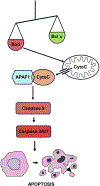Cellular mechanisms of noise-induced hearing loss
- PMID: 27916698
- PMCID: PMC6750278
- DOI: 10.1016/j.heares.2016.11.013
Cellular mechanisms of noise-induced hearing loss
Abstract
Exposure to intense sound or noise can result in purely temporary threshold shift (TTS), or leave a residual permanent threshold shift (PTS) along with alterations in growth functions of auditory nerve output. Recent research has revealed a number of mechanisms that contribute to noise-induced hearing loss (NIHL). The principle cause of NIHL is damage to cochlear hair cells and associated synaptopathy. Contributions to TTS include reversible damage to hair cell (HC) stereocilia or synapses, while moderate TTS reflects protective purinergic hearing adaptation. PTS represents permanent damage to or loss of HCs and synapses. While the substrates of HC damage are complex, they include the accumulation of reactive oxygen species and the active stimulation of intracellular stress pathways, leading to programmed and/or necrotic cell death. Permanent damage to cochlear neurons can also contribute to the effects of NIHL, in addition to HC damage. These mechanisms have translational potential for pharmacological intervention and provide multiple opportunities to prevent HC damage or to rescue HCs and spiral ganglion neurons that have suffered injury. This paper reviews advances in our understanding of cellular mechanisms that contribute to NIHL and their potential for therapeutic manipulation.
Keywords: Apoptosis; Damage signaling; Hair cell; Noise-induced hearing loss; Pharmacotherapy; Survival signaling.
Published by Elsevier B.V.
Figures


References
-
- Agell N, Bachs O, Rocamora N, Villalonga P, 2002. Modulation of the Ras/Raf/MEK/ERK pathway by Ca(2+), and calmodulin. Cell Signal 14, 649–654. - PubMed
-
- Bagger-Sjöbäck D, Strömbäck K, Hakizimana P, Plue J, Larsson C, Hultcrantz M, Papatziamos G, Smeds H, Danckwardt-Lillieström N, Hellström S, Johansson A, Tideholm B, Fridberger A, 2015. A randomised, double blind trial of NAC for hearing protection during stapes surgery. PLoS One 10, e0115657. - PMC - PubMed
-
- Batandier C, Leverve X, Fontaine E, 2004. Opening of the mitochondrial permeability transition pore induces reactive oxygen species production at the level of the respiratory chain complex I. J. Biol. Chem 279, 17197–17204. - PubMed
-
- Battaglia A, Pak K, Brors D, Bodmer D, Frangos JA, Ryan AF, 2003. Involvement of Ras activation in toxic hair cell damage of the mammalian cochlea. Neuroscience 122, 1025–1035. - PubMed
Publication types
MeSH terms
Grants and funding
LinkOut - more resources
Full Text Sources
Other Literature Sources
Medical

